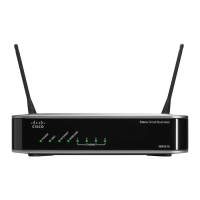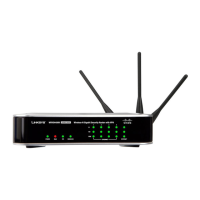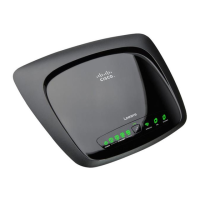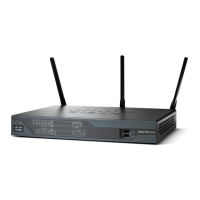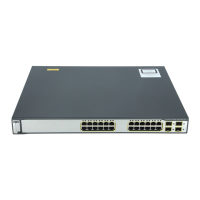REVIEW DRAFT #1—CISCO CONFIDENTIAL
3-2
Cisco WRP500 Administration Guide
Chapter 3 Configure Voice Services
ATA Software Features
ATA Software Features
The WRP500 is equipped with a full featured, fully programmable ATA that can be custom provisioned
within a wide range of configuration parameters. The following sections describe the factors that
contribute to voice quality:
• “Supported Codecs,” on page 2
• “SIP Proxy Redundancy,” on page 2
• “Other ATA Software Features,” on page 3
Supported Codecs
The WRP500 supports the following codecs:
• G.711u (configured by default) and G.711a
G.711 (A-law and mµ-law) are very low complexity codecs that support uncompressed 64 kbps
digitized voice transmissions at one through ten 5 ms voice frames per packet. This codec provides
the highest voice quality and uses the most bandwidth of any of the available codecs.
• G.729a
The ITU G.729 voice coding algorithm is used to compress digitized speech. G.729a is a reduced
complexity version of G.729. It requires about half the processing power as compared to G.729. The
G.729 and G.729a bit streams are compatible and interoperable, but not identical.
The administrator can select the preferred codecs to be used for each line. See the “Audio Configuration
section,” on page 39.
In addition, negotiation of the optimal voice codec sometimes depends on the ability of an ATA to match
a codec name with the codec used by the far-end device. You can individually name the various codecs
so that the WRP500 can successfully negotiate the codec with the far-end equipment. For more
information, see the “Audio Configuration section,” on page 39.
SIP Proxy Redundancy
In typical commercial IP Telephony deployments, all calls are established through a SIP proxy server.
An average SIP proxy server may handle thousands of subscribers. It is important that a backup server
be available so that an active server can be temporarily switched out for maintenance. The WRP500
supports the use of backup SIP proxy servers (via DNS SRV) so that service disruption should be nearly
eliminated.
A relatively simple way to support proxy redundancy is to configure your DNS server with a list of SIP
proxy addresses. The WRP500 can be instructed to contact a SIP proxy server in a domain named in the
SIP message. The WRP500 consults the DNS server to get a list of hosts in the given domain that
provides SIP services. If an entry exists, the DNS server returns an SRV record that contains a list of SIP
proxy servers for the domain, with their host names, priority, listening ports, and so on. The WRP500
tries to contact the list of hosts in the order of their stated priority.
If the WRP500 is currently using a lower priority proxy server, it periodically probes the higher priority
proxy to see whether it is back on line, and switches back to the higher priority proxy when possible.
SIP Proxy Redundancy is configured in the Line and PSTN Line pages in the Configuration Utility. See
Appendix B, “Data Fields.”.

